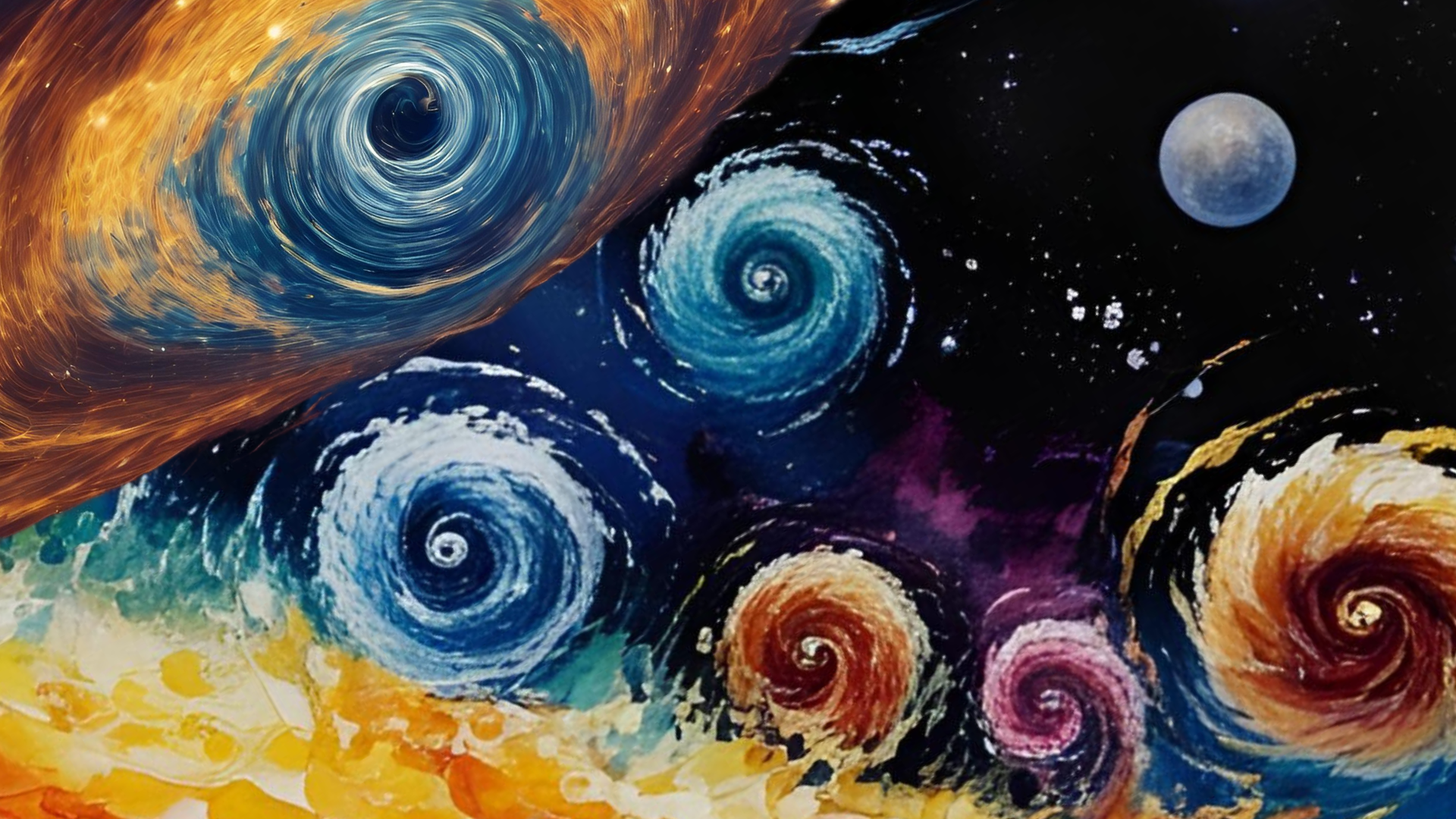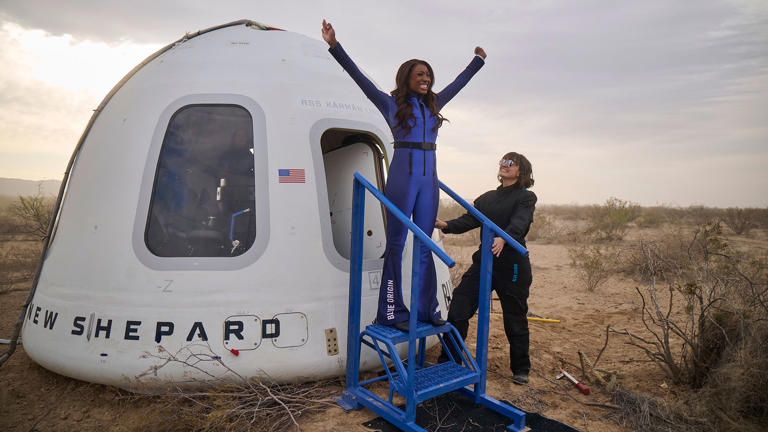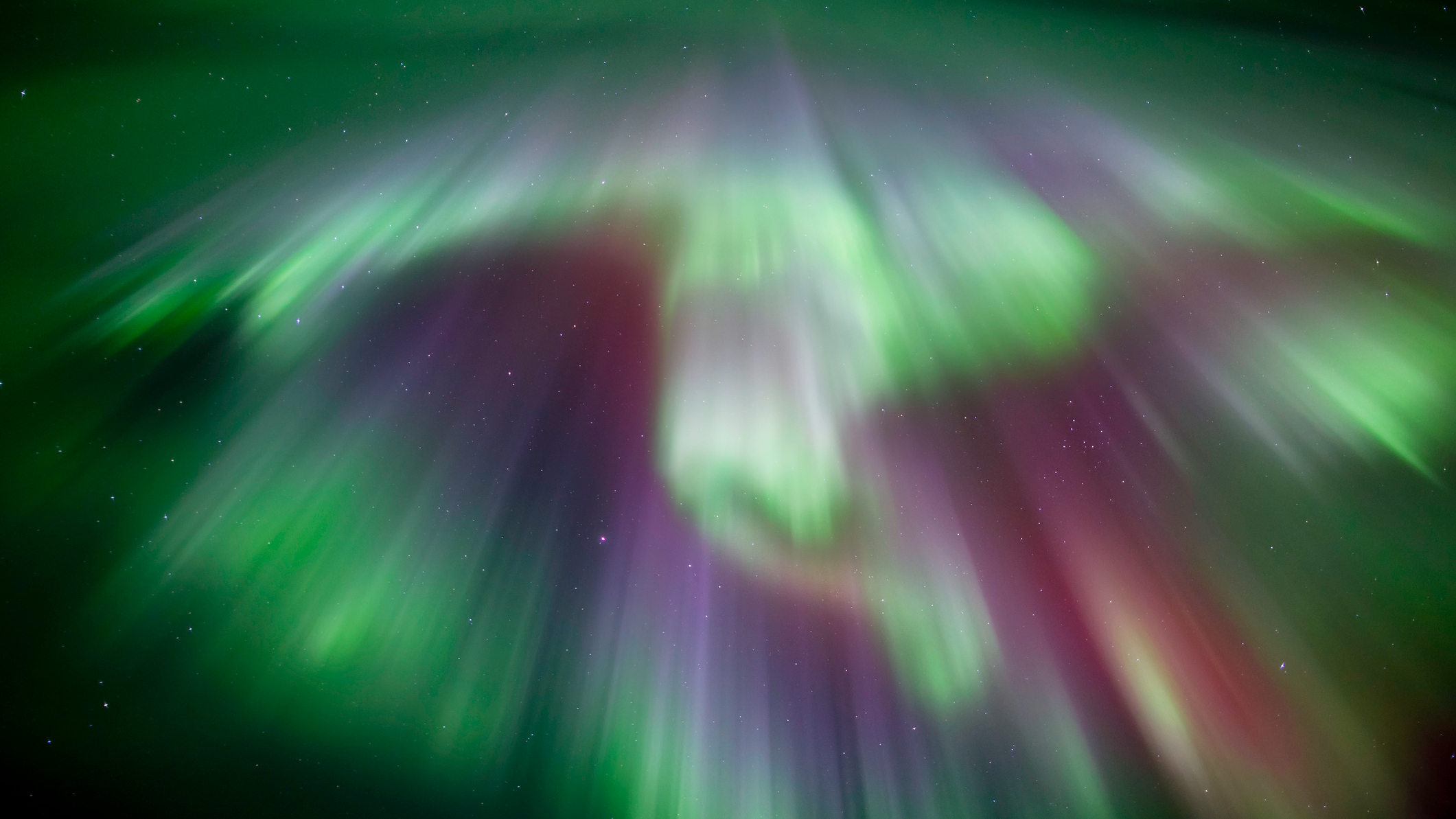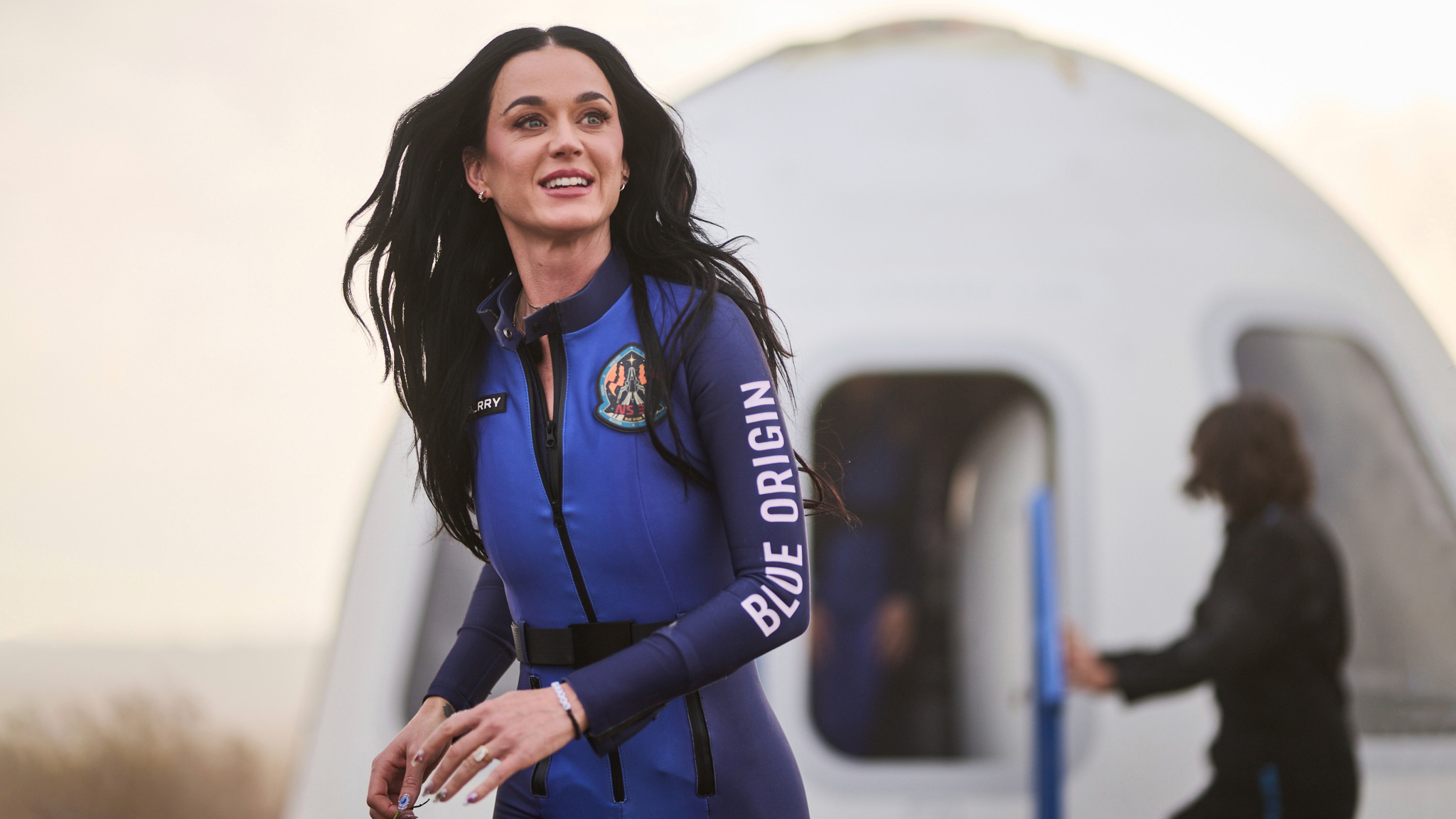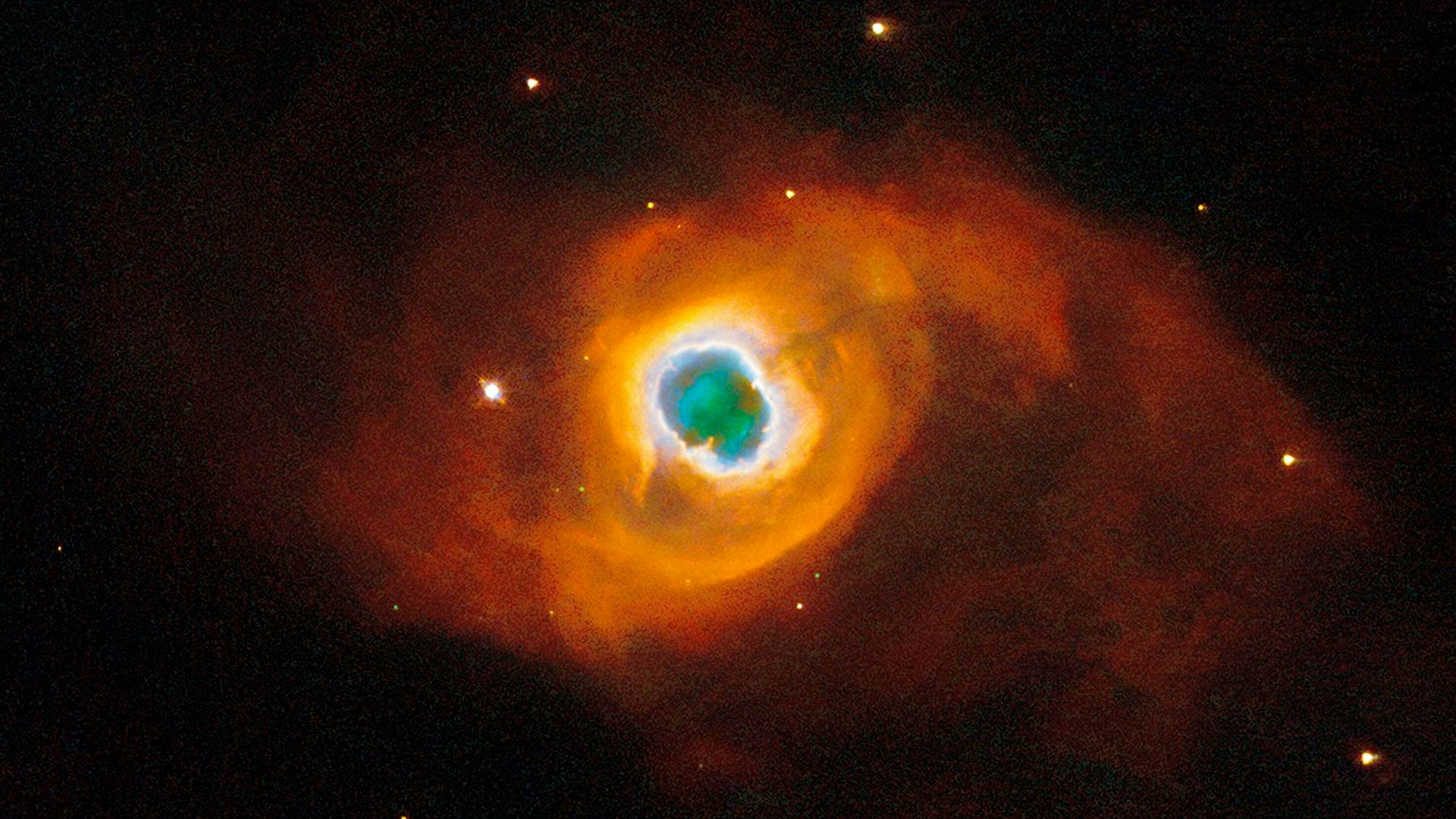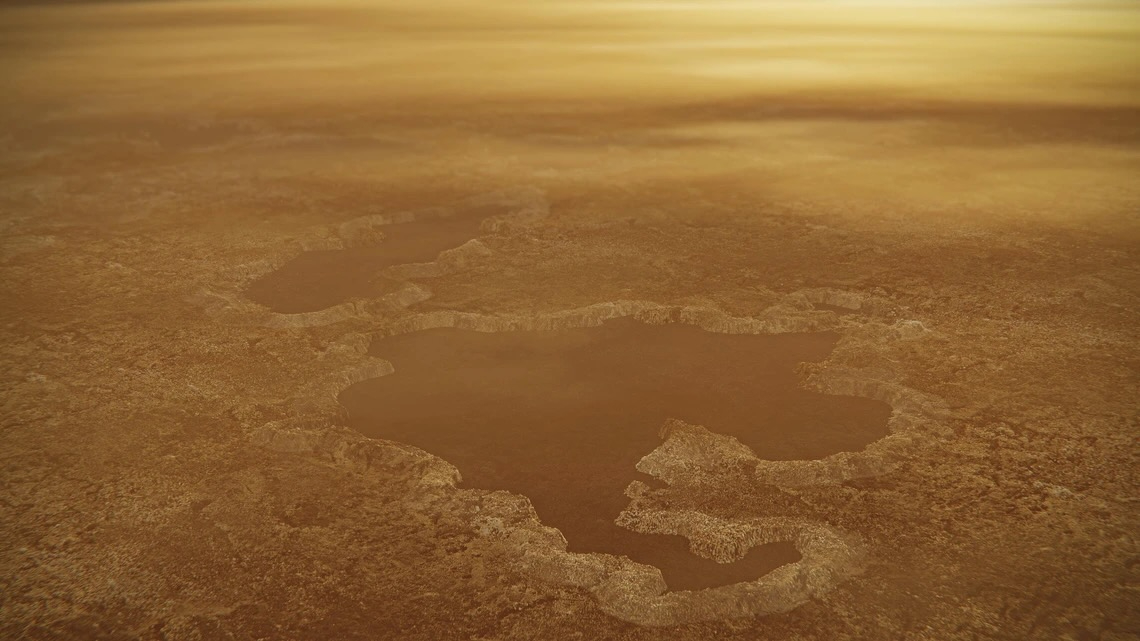Spot the Shuttle: How to See Discovery on Final Flight to the Smithsonian
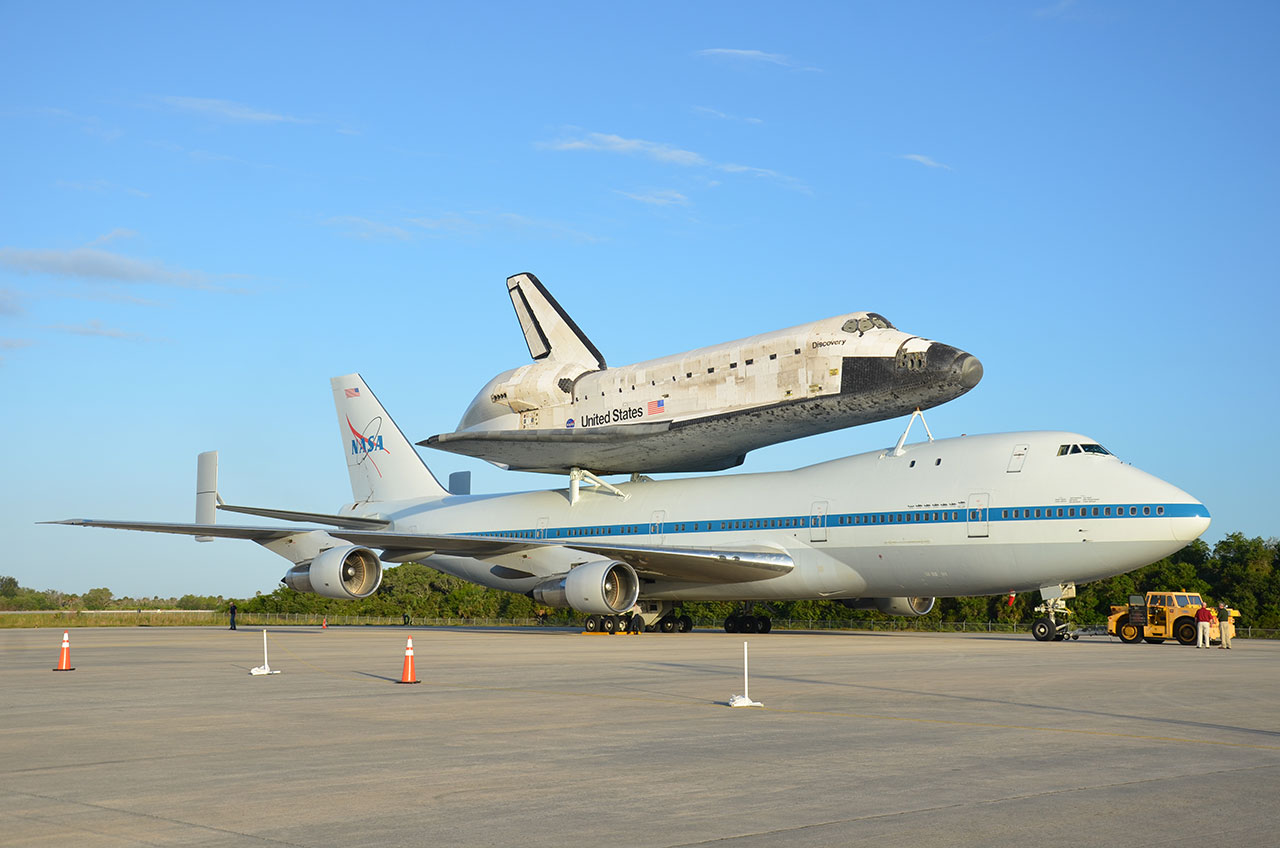
UPDATE: Space shuttle Discovery is on its way to Washington, D.C. Read the latest story: Space Shuttle Discovery Takes Off on Final Flight to the Smithsonian
CAPE CANAVERAL, Fla. — Look up! It's a bird and a plane...
Space shuttle Discovery will take to the air on Tuesday morning (April 17), flying piggyback atop a NASA jumbo jet from Florida to Washington, D.C. to be delivered to the Smithsonian for display. Those along its flight path are in store for low passes, historic flybys and overall, quite the sky show.
The shuttle spectacle began a day early,on Monday, as the air- and- spacecraft combo was placed on full display at NASA's Kennedy Space Center in Florida. Paired with the Shuttle Carrier Aircraft (SCA), a modified-Boeing 747, Discovery was parked alongside its landing strip where the media, NASA employees and bused-in guests from the center's visitor complex were able to get one last, long look at the retired orbiter.
Even Discovery's final crew, the six astronauts who flew the shuttle's STS-133 mission in March 2011, stopped by Kennedy's Shuttle Landing Facility to bid their spacecraft a bon voyage.
The chances for spotting the shuttle will increase Tuesday as Discovery heads up the Eastern Seaboard.
Flight over Florida
Get the Space.com Newsletter
Breaking space news, the latest updates on rocket launches, skywatching events and more!
Discovery, on top of its carrier aircraft, will lift off from the same runway where it last landed from space more than a year ago. Weather permitting, the ferry flight will take off just after sunrise at 7 a.m. EDT (1100 GMT). [Gallery: Discovery Mated to Carrier Aircraft]
In a first, the Kennedy Space Center's Visitor Complex is providing a limited chance for guests to see the departure from the Shuttle Landing Facility, though a premium ticket purchase is required.
Visitors who remain at the complex though, may have an equally spectacular view.
After taking off, the Shuttle Carrier Aircraft is expected to first head south, flying over Port Canaveral and Cocoa Beach, Patrick Air Force Base and then performing a low pass over the visitor complex's Rocket Garden. Soaring just 300 feet (91 meters) above the ground, Discovery will skirt over the rocket boosters that preceded it into history, including Mercury, Gemini and Apollo-era launch vehicles.
The 747-shuttle pair will then do another low pass at the Shuttle Landing Facility before heading north.
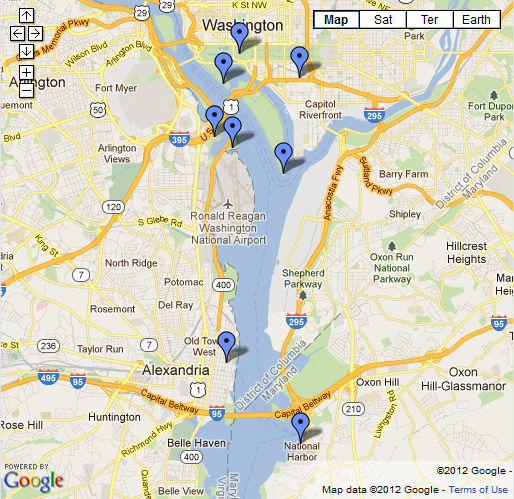
Spot the shuttle
The exact flight route Discovery will follow from Florida to Washington, D.C. is weather dependent and for security reasons and operation constraints, has not been released in advance, although NASA may provide real time updates through its website and social network accounts on the day of the ferry flight.
Once in the vicinity of the nation's capital, the shuttle is anticipated to circle the city, flying over some of historic monuments and federal buildings in Washington. The SCA is expected to arrive in the city's airspace between 10 a.m. and 11 a.m. EDT (1400 to 1500 GMT).
Discovery is expected to be flown at about 1,500 feet (460 meters) near the National Mall and Reagan Airport.
NASA and the Smithsonian have suggested some viewing locations from where the public may "spot the shuttle." These sites include Hains Point/East Potomac Park and Southwest Waterfront Park in D.C.; Long Bridge Park, Old Town Alexandria Waterfront and Gravelly Point in Virginia; and National Harbor in Maryland.
According to the Smithsonian, the best place to view the shuttle on its approach into Dulles International Airport will be from the parking lot of the museum where the orbiter will go on permanent display. The National Air and Space Museum's Steven F. Udvar-Hazy Center, located adjacent to the airport in Chantilly, Va., will open its parking area early at 8 a.m.
Visitors are invited to BYOB — Bring Your Own Breakfast — although the museum's McDonald's will also be open. Guests should also bring $15, the cost to park in the lot.
Orbiter online
Unless they are a ticket holding passenger on a well-timed incoming or outgoing flight from Dulles, the public will not be able to directly view the touchdown at Dulles. NASA however may show the landing live through its television channel, which it also streams through its website: http://www.nasa.gov/multimedia/nasatv/index.html
Local TV news outlets and other media organizations may also show the landing live.
The Smithsonian is encouraging those who are successful in spotting the shuttle share their photographs and videos through the museum's website and social media accounts. Twitter and YouTube users can use #spottheshuttle to tag their sightings.
Shuttle spotters who register their name on Tuesday on the National Air and Space Museum's site could win one of five chances to sit in the VIP section at the "Welcome Discovery" arrival ceremony at the Udvar-Hazy Center on April 19.
Visit shuttles.collectspace.com for continuing coverage of the delivery and display of NASA's retired space shuttles.
Follow collectSPACE on Facebook and Twitter @collectSPACE and editor Robert Pearlman @robertpearlman. Copyright 2012 collectSPACE.com. All rights reserved.
Join our Space Forums to keep talking space on the latest missions, night sky and more! And if you have a news tip, correction or comment, let us know at: community@space.com.

Robert Pearlman is a space historian, journalist and the founder and editor of collectSPACE.com, a daily news publication and community devoted to space history with a particular focus on how and where space exploration intersects with pop culture. Pearlman is also a contributing writer for Space.com and co-author of "Space Stations: The Art, Science, and Reality of Working in Space” published by Smithsonian Books in 2018.In 2009, he was inducted into the U.S. Space Camp Hall of Fame in Huntsville, Alabama. In 2021, he was honored by the American Astronautical Society with the Ordway Award for Sustained Excellence in Spaceflight History. In 2023, the National Space Club Florida Committee recognized Pearlman with the Kolcum News and Communications Award for excellence in telling the space story along the Space Coast and throughout the world.

